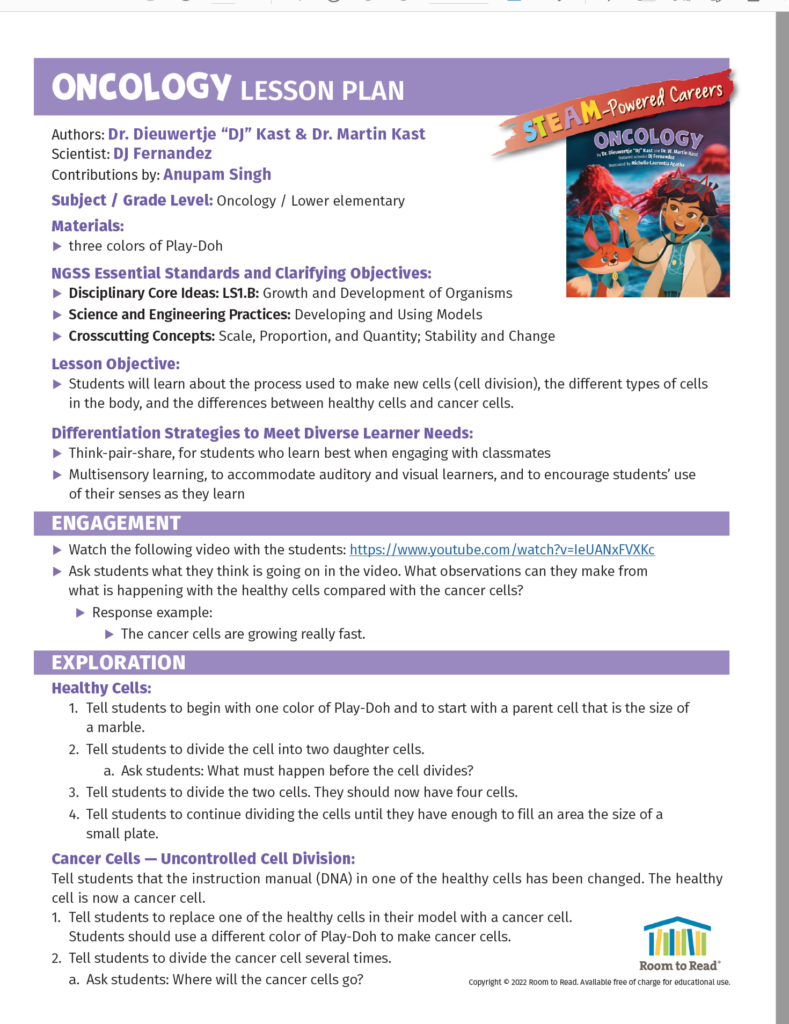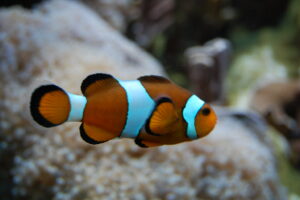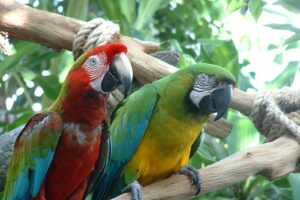GUEST BLOGGER DR. DIEUWERTJE KAST
Representation matters.
The data shows that representation of yourself in the scientists you see in front of you influences your own science identity and how much you persist in STEM fields. In that department, children’s literature is failing students. A study published in 2018, stated that half of all childrens books reviewed featured white main characters, and that there were more non-human characters (27%) then there were for all people of color combined (23%). In their study 10% of the childrens books featured an African American/ Black main character, and 5% featured a Latinx one. How are students from BIPOC communities supposed to envision themselves as scientists when the kids’ books they are presented feature mostly white main characters?
The background
The University of Southern California (USC) Joint Educational Project (JEP) STEM education programs have written STEM curricula for many years. Especially for the Wonderkids Program. We try to pair children’s books with the content that’s being presented, especially books that feature BIPOC characters. I’ve had a running list of books we’ve needed that just don’t exist. In a special collaboration with Room to Read, we created the free STEAM-Powered Careers Book Collection, a 10-book series that features three main BIPOC characters – Jae, Mia, and Cora (Asian male, Latina female, and Black female characters).
We interviewed BIPOC scientists who explore topics ranging from polar science to gastroenterology to nanotechnology. We hope the series inspires readers to consider STEM opportunities and interests. Each book includes resources and curriculum for classroom use.
Exploring oncology
For example, after reading the ONCOLOGY book in the STEAM-Powered Careers series students and teachers can perform the following lesson together:
Lesson objective
Students will learn about the process used to make new cells (cell division), the different types of cells in the body, and the differences between healthy cells and cancer cells
Engagement
- Watch the following video with the students.
- Ask students what they think is going on in the video. What observations can they make from what is happening with the healthy cells compared with the cancer cells? Response example: The cancer cells are growing really fast.
Exploration
Healthy Cells
- Tell students to begin with one color of Play-Doh and to start with a parent cell that is the size of
- a marble.
- Tell students to divide the cell into two daughter cells. Ask students: What must happen before the cell divides?
- Tell students to divide the two cells. They should now have four cells.
- Tell students to continue dividing the cells until they have enough to fill an area the size of a
- small plate.
Cancer Cells — Uncontrolled Cell Division
- Tell students that the instruction manual (DNA) in one of the healthy cells has been changed. The healthy cell is now a cancer cell.
- Tell students to replace one of the healthy cells in their model with a cancer cell.
- Students should use a different color of Play-Doh to make cancer cells.
- Tell students to divide the cancer cell several times.
- Ask students: Where will the cancer cells go? What will this do to the healthy cells?
- Show how this accumulation of cancer cells leads to the formation of a tumor that contains an abundance of cancer cells.
Did we mention these resources are free?
The STEAM-Powered Careers series focuses on the topics below and is available in English and in Spanish. Digital copies of the books are available on the Room to Read website and each of them has a lesson plan that elementary teachers can teach with in conjunction with the books (see below for links)
STEAM Career Topics: Oncology, Polar Science, Virtual Reality, Data Science, Engineering, Occupational Therapy, Marine Biology, Gastroenterology, Nanotechnology, and Heart Surgery.
- Free Digital copies of the books (In English and Spanish)
- NGSS aligned Lesson Plans (in English and Spanish) for each book and the corresponding and Scientist Interview videos
Dr. Dieuwertje (DJ) Kast is the Director of STEM Education Programs, Joint Educational Project, University of Southern California. SHe works on issues related to access and equity for thousands of low-income students of color in regard to educational technology implementation.
Her doctorate research was focused on preparing elementary school teachers how to integrate science and technology into their classrooms in a culturally relevant manner.
She works with approximately 3000 K-12 students annually, equating to 29,000 students impacted. She is primarily a curriculum writer, program developer and implementer of technology. She has written curriculum of educational technology including a middle school curriculum for the raspberry pi device, the ISS Above, a 3D printing curriculum for elementary school teachers, and a wearable technology course for middle school students. She has also hosted underwater robotics workshops with functional needs students that received national acclaim.
A lot of her work exposes new and emerging technology to low-income K-12 students of color who may otherwise not have access to it. Much of the work is publicized in open-source articles, how-to guides, social media, conference sessions, professional development sessions and blogs so that other educators can take it and use it in their own formal and informal educational settings.













Leave a Reply
Your email is safe with me.